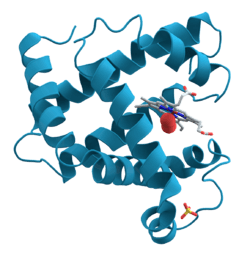Phytochemistry
| Part of a series on |
| Biochemistry |
|---|
 |
| Key components |
| History and topics |
| Portals: Biology, MCB |
Phytochemistry is the study of phytochemicals, which are chemicals derived from plants. Specifically, phytochemistry describes the large number of secondary metabolic compounds found in plants. Many of these are known to provide protection against insect attacks and plant diseases. They also exhibit a number of protective functions for human consumers.[1]
Phytochemistry can be considered sub-fields of botany or chemistry. Activities can be led in botanical gardens or in the wild with the aid of ethnobotany. The applications of the discipline can be for pharmacognosy, or the discovery of new drugs, or as an aid for plant physiology studies.
Techniques
Techniques commonly used in the field of phytochemistry are extraction, isolation and structural elucidation (MS,1D and 2D NMR) of natural products, as well as various chromatography techniques (MPLC, HPLC, LC-MS).
Constituent elements
The list of simple elements of which plants are primarily constructed—carbon, oxygen, hydrogen, calcium, phosphorus, etc.—is not different from similar lists for animals, fungi, or even bacteria. The fundamental atomic components of plants are the same as for all life; only the details of the way in which they are assembled differs.
Eastern medicine
Phytochemistry is widely used in the field of Chinese medicine especially in the field of herbal medicine.
Phytochemical technique mainly applies to the quality control of Chinese medicine, Ayurvedic medicine(Indian traditional medicine) or herbal medicine of various chemical components, such as saponins, alkaloids, volatile oils, flavonoids and anthraquinones. In the development of rapid and reproducible analytical techniques, the combination of HPLC with different detectors, such as diode array detector (DAD), refractive index detector (RID), evaporative light scattering detector (ELSD) and mass spectrometric detector (MSD), has been widely developed.
In most cases, biologically active compounds in Chinese medicine, Ayurveda, or herbal medicine have not been determined. Therefore, it is important to use the phytochemical methods to screen and analyze bioactive components, not only for the quality control of crude drugs, but also for the elucidation of their therapeutic mechanisms. Modern pharmacological studies indicate that binding to receptors or ion channels on cell membranes is the first step of some drug actions. A new method in phytochemistry called biochromatography has been developed. This method combines human red cell membrane extraction and high performance liquid chromatography to screen potential active components in Chinese medicine.
Types of substances studied
Major research institutes
References
Literature
- Girish Dwivedi; Dwivedi Shridhar (2007). "History of Medicine: Sushruta – the Clinician – Teacher par Excellence" (PDF). Indian J Chest Dis Allied Sc. 49: 243–244.